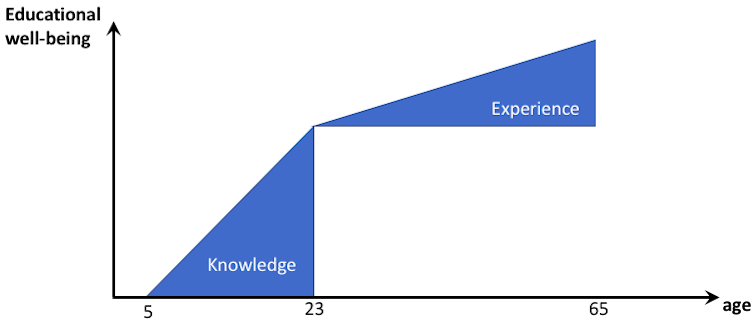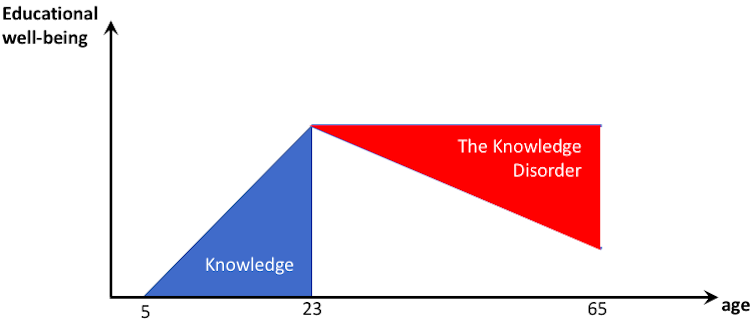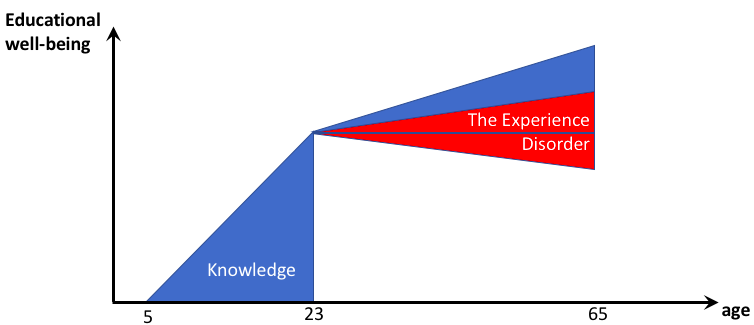by Pat Thomson, Patter: https://patthomson.net/2020/08/31/dealing-with-rejection/
This is a guest post from Dan Cleather. Dan is a strength coach, educator, scientist and anarchist. His latest book, “Subvert! A philosophical guide for the 21st century scientist”, was published in May.
Being an academic requires a thick skin. Very thick. Part of the job is dealing with a constant stream of rejections – on journal articles, grant applications, speaker applications, promotion requests … Rejection is always disappointing. However, over time we grow to understand that rejections often have little to do with the quality of the work. This helps us to protect our self-esteem – at least most of the time.
Experience is an important teacher in developing your thick skin. Once you have shepherded a few papers through a series of rejections and then ultimately into print, you can have confidence that your work is good, and put rejections down to editorial considerations or the vagaries of the peer review process.
But what if you are a student or an early career researcher? In this case you don’t have this experience, and each rejection can badly rock your self-confidence. I believe that rejections are a key factor in the growth of imposter syndrome in academia.
When one of my students first submits their work to an academic journal I always walk a weird tightrope in giving encouragement and managing expectations. On the one hand, I want to tell the student how good their work is. On the other, I need to prepare them for the fact that rejection is a very possible, and often likely, outcome. This post is the blog form of that conversation.
1. Appreciate The Statistics (Listen To The Horror Stories)
It is normal for excellent articles to get rejected. Some of the reasons for this are described later in this post. Everyone will have their own horror stories. Mine is that the first article from my PhD was rejected from 5 journals before I managed to get it accepted. It now has 41 citations.
It is also normal (but not right) for the peer review process to be a long, frustrating and unpredictable affair. One of the best students I ever worked with had to wait for 2 years to get her first article into print – it broke my heart, as the work was fantastic. One of my favourite articles took 16 months to get through peer review (at the same journal), and despite the fact that I think it is some of my best work it never gets cited.
Applying for grants is even worse. The process is highly competitive, and so a lot of good proposals don’t get funded. The image here is a summary of my own grant applications over the last 10 years. Weeks of work went into each of these failed applications. It is a story with a happy ending, but this is only because of a recent success.
The take home message here is that, in academia, everyone gets rejected, all the time. When you are starting out you need to fight hard to believe this. Rejections are always disappointing, but at least if you appreciate the statistics you can reassure yourself that they are normal.
2. Understand Editorial Considerations
A key part of an editor’s role is to ensure that the content in their journal is of interest to their readers. Often, if you experience a desk rejection – that is your work is rejected without being sent out for review – it is because the editor has decided that your article is not appropriate for their journal, or they have other articles that they think their readers will find more interesting. Again, it needs to be emphasised that this has nothing to do with the quality of the work – you are unlikely to get an article about lung disease into a cardiac journal, no matter how good it is. Of course, you might disagree with the editor – you probably sent the article to the journal because you wanted to reach that specific audience. However, it is up to the editor to steer the direction of a journal – ultimately the articles published in a journal will largely reflect the editor’s tastes. If they don’t favour your work it is important to bear in mind that this is just one person’s opinion.
Another part of an editor’s role is to act as custodian of the journal’s status. Many editors will be interested in the impact factor of their journal – i.e. how many times the articles in the journal are cited by external sources. This is a pretty awful way of judging a journal’s quality, but unfortunately is part of the current academic environment. For this reason, some editors will also reject articles that they don’t think will garner lots of citations. Again, just because an article doesn’t get cited does not mean it is not a good piece of work. Similarly, it is pretty difficult to predict this (even if you wanted to), and editors get it wrong all the time. Of the articles I have been involved with, the most highly cited one with 59 citations, was rejected from at least two journals (as I remember) before it was accepted.
The point here is that the quality of the work is only one of a number of competing factors that are used in decision making – and sometimes not even the most important one. Many excellent articles are rejected (rightly or wrongly) based upon the editor’s prerogative. Often, success is predicated on getting your work in front of the right person, someone who knows enough about it to appreciate its importance.
3. Be Critical Of The Peer Review Process
Peer review is a notoriously fickle process, and it is helpful to a have a healthy scepticism as to its efficacy. However, many academics don’t, viewing peer review as a sacred cow that protects the integrity of the academic literature. This is demonstrably false – there are plenty of high profile examples that show that peer review often doesn’t even detect cases of academic misconduct.
There is evidence that supports the contention that peer review is a fickle process. For instance, one study showed that the rate of agreement between reviewers at the Journal of General Internal Medicine was little better than would be produced by chance. Similar findings have been found in the peer review of grant applications (e.g. in Australia and the US). Every reasonably experienced academic will be able to relate examples of conflicting peer reviews that they have received.
What is the point of peer review if it is such a random process? Well, in many cases, peer review will improve the quality of an article, and it does provide some (imperfect) form of quality control. However, from the point of view of this blog post, you should recognise that a positive or negative recommendation is to some degree a matter of chance, and that you shouldn’t invest too much of your self-esteem in an academic flip of the coin.
4. Recognise Reviewer 2
Reviewer 2 is the person who sticks their hand up at the end of a presentation and asks the presenter why they didn’t do the study in an entirely different way.
Peer review is supposed to be a critical evaluation of your work. Ironically, sometimes peer reviewers are horribly uncritical. In particular, when performing a peer review, you should judge the article on its own merits – not list a plethora of alternative things that could have been done.
Peer reviewers are human too. You are often dealing with competitors, who have their own egos, and may have conflicting ideas as to how research should be done. If it seems to you that a reviewer is being unreasonable, then they probably are – and that sucks. It may even result in a rejection. To protect your self-esteem you need to recognise when your work is being rejected by Reviewer 2, and again, not take it is a reflection of your ability.
5. Back Yourself
Peer review is a process that will tend to reward work that conforms with the status quo, but that will tend to penalise potentially transformative research that breaks the mould. Peer review processes that improve the overall standard of research also result in more exceptional work being rejected, and papers that challenge the status quo undergo more changes during peer review. This is possibly best illustrated by the number of Nobel prize winning studies that were initially rejected for publication.
Of course, if you receive a rejection you should consider the feedback carefully and try to learn from it. However, rejections should not make you feel that your ideas don’t have merit. The history of science is one of new ideas replacing old ones. Yes, we should expose our ideas to outside tests, and we should have the intellectual honesty to properly weigh up counter-arguments and consider that we might be wrong. However, if we believe that our ideas stand up to these tests, we need to have the confidence to back ourselves.
Where does this all leave us?
There is no doubt that rejection sucks. However, it is part and parcel of academic life. It is important that you are critical of the evaluative processes that are a part of academia, and that you don’t buy into them too fully. Celebrate the successes, but don’t pay too much attention to the rejections.







